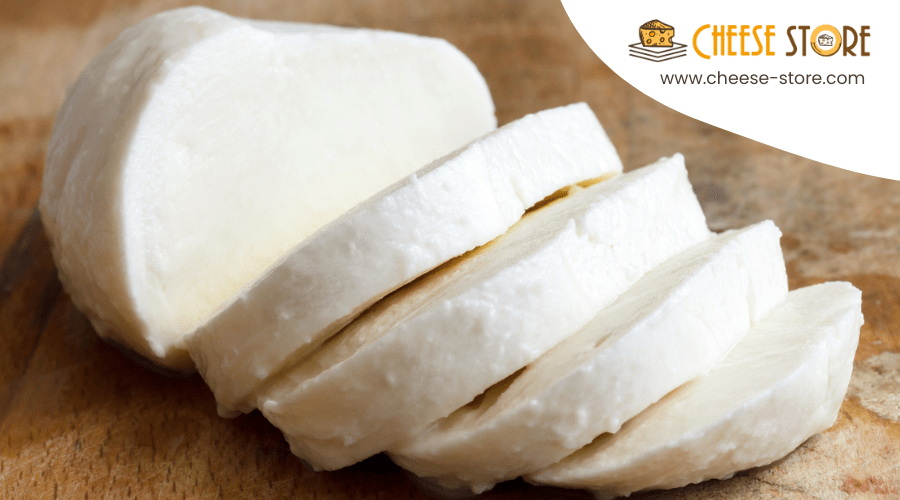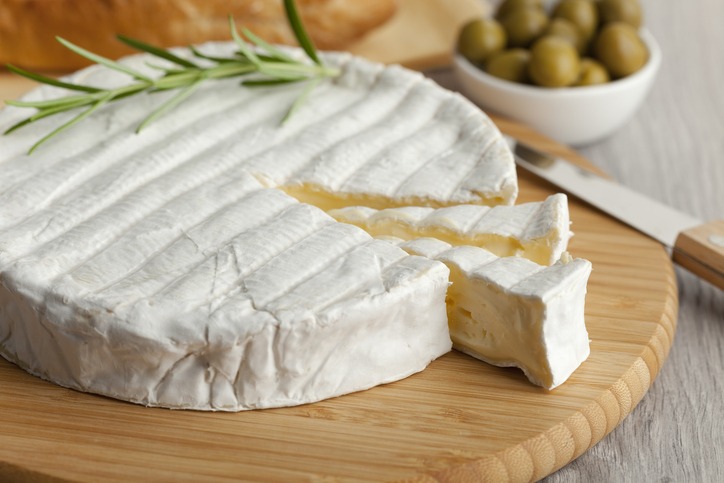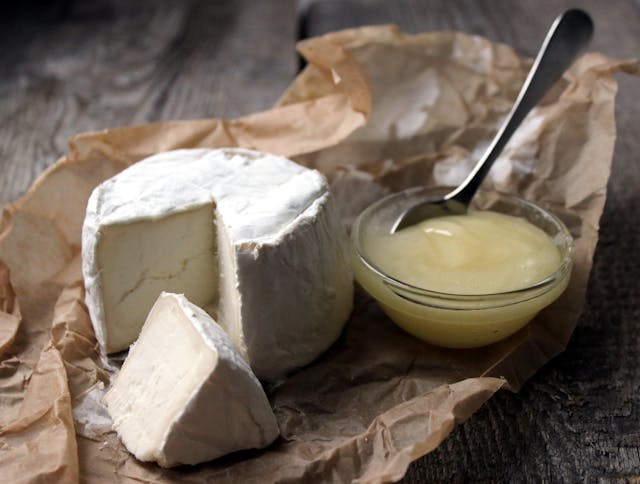You savor their textures, you relish their flavors, and you marvel at their varieties; white cheeses from around the globe offer a journey for your taste buds that’s as diverse as it is delightful. As a connoisseur of these milky treasures, you’re aware that each type of white cheese, from the creamy Brie of France to the briny Feta of Greece, has its own unique story to tell. But have you ever pondered over the intricate processes that give these cheeses their distinctive characteristics, or the cultural histories they carry?
There’s a world behind every slice, a narrative behind each bite, inviting you to explore further and uncover the secrets that make the world of white cheeses truly fascinating.
Key Takeaways
- White cheeses vary globally, from France’s Brie to Italy’s Mozzarella, each with unique flavors and textures.
- Aging processes and origins, like Manchego’s PDO status, significantly influence cheese characteristics.
- Culinary versatility is a hallmark, with cheeses like Feta enhancing salads and Mozzarella key to Italian dishes.
- Soft, brined, specialty, and aged categories offer a rich diversity in taste, texture, and culinary uses.
Brie: France’s Soft Gem
Hailing from France, Brie’s soft, creamy texture and rich flavor make it a must-try for cheese lovers. This cheese, known for its pale ivory to light yellow color, boasts a rich, buttery taste with subtle hints of mushrooms. Encased in a bloomy white rind, Brie is a demonstration of the art of cheese-making. The white mold that forms its distinctive rind is not just for show; it plays a vital role in developing Brie’s unique profile.
Aged for 4 to 9 weeks, Brie evolves into a cheese with a mild tanginess and a creme-fraiche-like aftertaste that’s both refined and delightful. Its versatility shines through whether you’re enjoying it solo or using it to elevate your culinary creations. Imagine melting it into a sauce or simply pairing it with a crisp glass of Champagne. The soft, creamy texture of Brie makes it an ideal companion to harder, fruity cheeses, creating a balance of flavors that’s hard to resist. If you’re a cheese enthusiast, Brie’s nuanced character and creamy goodness are sure to captivate your palate.
Feta: Greece’s Briny Treasure
As you explore the rich tapestry of white cheeses, it’s time to turn your attention to Feta, Greece’s briny treasure. You’ll find its ancient origins fascinating, learn about the meticulous production process, and discover its vast culinary uses worldwide. This journey into Feta’s world is bound to enrich your appreciation for this cherished Greek cheese.
Feta’s Ancient Origins
Feta, Greece’s briny treasure, boasts origins stretching back thousands of years, cementing its status as a cornerstone of culinary tradition. This cheese, deeply rooted in Greek culture, is a proof of the ingenuity of ancient dairy practices. The brining process, important for feta, imparts its signature tangy flavor and crumbly texture, making it a standout among cheeses. It’s not just any cheese; it’s a piece of history, a slice of Greece’s rich dairy tradition.
- Feta cheese is a protected designation of origin (PDO) product in Greece.
- Made traditionally from sheep’s milk or a blend with goat’s milk.
- The brining process significantly endows the tangy flavor.
- Versatile in use: salads, pastries, and table cheese.
- Aged in wooden barrels for at least 2 months before enjoyment.
Production Process Explained
To understand Feta’s distinctive taste, you’ll need to explore into its production process, a blend of tradition and meticulous craftsmanship. Originating from Greece, Feta cheese is a gem in the world of dairy products, crafted from sheep’s milk or a mix of sheep’s and goat’s milk. Holding a PDO status, its authenticity is safeguarded, ensuring that the cheese manufacturing follows age-old methods. The secret to Feta’s tangy flavor and crumbly texture lies in its natural ripening in a brine solution for at least three months. This method, coupled with the influence of local flora and fauna, enhances its unique taste. As a ripened cheese, Feta stands out for its versatility in Mediterranean cuisine, beloved across the globe.
Culinary Uses Worldwide
Feta cheese’s unique blend of saltiness and creaminess has made it a beloved ingredient in kitchens around the world. Originating from Greece, this white cheese, protected by its PDO status, is traditionally made from sheep’s milk or a blend of sheep and goat’s milk. Its tangy taste and crumbly yet creamy texture emerge from months of careful brine aging, a key part of the cheese ripening process.
To truly enjoy what this Greek treasure has to offer, consider adding it to:
- Greek salads for a briny kick
- Spinach and feta pies for a creamy filling
- Grilled vegetable dishes for a tangy contrast
- Fresh watermelon and feta salads for a sweet and salty delight
- Homemade pizza toppings for a Mediterranean flair
Mozzarella: Italy’s Delicate Wonder
You’re about to explore the world of Mozzarella, Italy’s delicate wonder, a cheese that boasts a rich heritage and a unique production process. From its origins and history to how it’s made and used in cooking, you’ll discover the secrets behind its soft, stretchy texture and milky flavor. Whether it’s gracing a Caprese salad or melting beautifully on a pizza, Mozzarella’s versatility and culinary applications are as fascinating as its story.
Origins and History
Nestled in the heart of Italy’s Campania region, mozzarella’s story began with the traditional use of water buffalo milk. This cheese, a staple of Italian cuisine, owes its origins to the lush fields where water buffaloes roamed. The name ‘mozzarella’ itself is derived from the action of ‘mozzare,’ a validation to the hands-on process that defines its creation. Cherished for its delicate flavor and distinctive texture, mozzarella has gained international recognition, not least because of its Protected Designation of Origin (PDO) status, ensuring its traditional authenticity.
- Mozzarella’s delicate, milky flavor is a culinary delight.
- Originating in Campania, Italy, it carries a rich heritage.
- Made traditionally from water buffalo milk.
- The name reflects its hand-crafted origins.
- Protected by PDO status, ensuring authenticity.
Production Process
To understand mozzarella’s unique charm, you must immerse yourself in its meticulous production process, starting with the curdling of either buffalo or cow’s milk. This initial step is foundational in cheese production, where heating the milk and adding rennet initiates coagulation. The magic unfolds as starter cultures work their charm, influencing the cheese’s moisture and fat content, pivotal for achieving mozzarella’s signature texture. Stretching the curd is an art, crafting its stretchy, elastic nature, perfect for melting. Shaping into balls or logs, then immersing in brine, not only enhances flavor but also texture. Remember, authentic Mozzarella di Bufala Campana bears a PDO status, a proof of its traditional roots and unmatched quality.
Culinary Uses
As a cornerstone of Italian cuisine, mozzarella’s delicate texture and mild flavor make it the ideal choice for a wide range of dishes, from classic pizzas to fresh caprese salads. Originating from Campania, Italy, and traditionally made from buffalo milk, this cheese’s stringy consistency elevates any culinary creation.
To help you enjoy mozzarella’s versatility, consider these culinary uses:
- Classic Margherita Pizza: The stringy consistency of mozzarella shines atop a simple tomato and basil pizza.
- Caprese Salad: Slices of mozzarella paired with tomato and basil, drizzled with olive oil.
- Lasagna: Layers of mozzarella melt beautifully, binding the ingredients together.
- Grilled Cheese Sandwiches: A gourmet twist with mozzarella offering a mild, creamy texture.
- Stuffed Appetizers: Mozzarella-stuffed mushrooms or peppers, baked until gooey.
Manchego: Spain’s Aged Masterpiece
Discover the rich heritage of Spain through its aged masterpiece, Manchego cheese, a traditional delight made from the milk of Manchega sheep. This Spanish cheese stands out not just for its distinct origins but also for its meticulous aging process. Aged cheese like Manchego undergoes a minimum of 60 days aging, though you’ll find varieties that have been perfected over two years, offering a spectrum of flavors. From mild and fruity undertones to a sharp and nutty finish, the taste of Manchego evolves with time, making it a favorite among cheese connoisseurs.
What sets Manchego apart is not only its flavor but also its appearance. The cheese’s rind features a unique basket-weave pattern, a nod to the traditional molds used during its aging process. This attention to detail ensures each slice of Manchego is a piece of Spanish culinary art.
Furthermore, Manchego’s authenticity is protected by its Protected Designation of Origin (PDO) status, guaranteeing that only cheese produced in specific regions of Spain, following rigorous standards, can bear the name. This dedication to quality and tradition makes Manchego a true symbol of Spanish heritage, celebrated worldwide for its unparalleled taste and craftsmanship.
Iranian White-Brined Delicacies
Continuing our global cheese journey, let’s explore the savory world of Iranian white-brined delicacies, a confirmation to the country’s rich dairy traditions. This Middle Eastern treasure’s cheesemaking process is fascinating, especially how it balances tradition with modern methods to create a product that’s both delicious and unique. Iranian white cheese is a key to the craftsmanship involved in cheese production, where every detail matters, from the choice of milk to the ripening time under brine.
- Iranian white cheese is ripened for 45-90 days in industrial settings, but traditional methods can extend this to 6-8 months.
- The use of ultrafiltration (UF) and pasteurized cow’s milk alongside a mesophilic starter culture and commercial microbial rennet characterizes large-scale production.
- UF not only increases the cheese yield but also enhances resource efficiency, with the coagulant concentration being vital to cheese quality.
- Gum tragacanth improves the quality of low-fat varieties, showing how additives can influence texture and flavor.
- The protein content, along with other chemical components like pH and moisture, plays a crucial role in defining the cheese’s character, influenced significantly by the starter culture.
Through these insights, you’re now closer to understanding the complexities behind Iranian white-brined cheeses, a dairy delight that’s both rich in flavor and tradition.
Teleme: America’s Creamy Contribution
Plunge into the world of Teleme cheese, America’s creamy specialty hailing from California, known for its soft texture and rich, buttery taste. This delightful cream cheese originates from the golden state, offering a unique American twist on traditional creamy cheeses. Crafted from cow’s milk, Teleme boasts a velvety texture that melts in your mouth, complemented by its slightly tangy finish that elevates its mild, buttery flavor.
Here’s a quick glance at what makes Teleme a must-try:
| Characteristic | Detail |
|---|---|
| Origin | California, USA |
| Milk Source | Cow’s milk |
| Aging Period | About 30 days |
| Flavor Profile | Rich, buttery, slightly tangy |
Teleme cheese’s versatility is unmatched. Whether you’re looking to enjoy it on its own, sandwiched between fresh bread, or melted over your favorite dishes, it’s guaranteed to add a layer of creaminess that’s hard to resist. It’s not just a cheese; it’s an experience, offering a glimpse into the innovative spirit of American cheesemaking. So, next time you’re exploring the world of cheeses, don’t overlook Teleme, a creamy contribution that America proudly shares with the world.
Explorateur: The French Triple Cream
Immerse yourself in the lavish world of Explorateur, a French triple cream cheese celebrated for its exceptionally high butterfat content and sublime, creamy texture. Originating from the verdant Île-de-France region, this cow’s milk cheese brings forth a mild yet intriguing flavor profile marked by subtle hints of mushrooms. Its rich, buttery pate complements both sweet and salty cravings, offering a unique taste experience that cheese lovers cherish.
With its creamy consistency and bloomy white rind, Explorateur showcases a beautiful pale ivory to light yellow hue, further enhanced by its slight mushroom aroma. It’s not just a cheese; it’s a delicacy that transforms any cheeseboard into a luxurious feast.
To fully enjoy Explorateur, consider these pairing suggestions:
- Pair with harder, fruity cheeses for a delightful contrast.
- Enjoy with Champagne to elevate its rich flavors.
- Serve on a warm baguette for a simple yet exquisite snack.
- Complement with fresh figs or berries for a burst of sweetness.
- Try with a light, crisp white wine for a renewing taste experience.
Immerse yourself in the creamy, dreamy world of Explorateur and let its exceptional qualities captivate your palate.
Conclusion
You’ve journeyed through the world of white cheeses – from France’s velvety Brie to Greece’s salty Feta, Italy’s tender Mozzarella, Spain’s robust Manchego, the savory brines of Iran, America’s luscious Teleme, and the decadent Explorateur of France. Each cheese, with its unique flavors and textures, tells a story of tradition, innovation, and culinary artistry. So, immerse yourself in these milky marvels, explore their rich histories and let your taste buds revel in the global tapestry of white cheeses.




